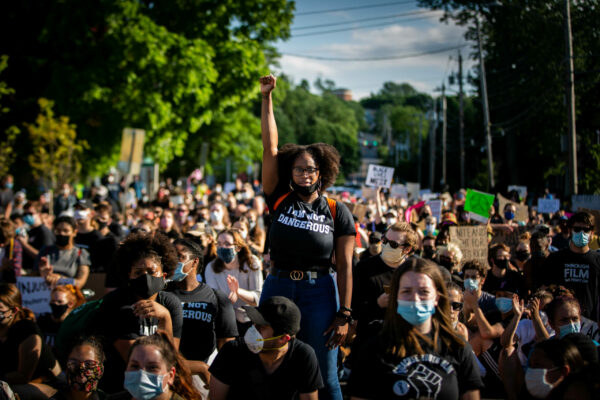“Today the fight for life, the fight for Eros, is the political fight.”
(Herbert Marcuse, Eros and Civilization, 1966)
“Eros is historically shaped but eternally emergent. Love binds us together, gives us the courage to make history, to stare down our fears . . . and gives us the nerve to be resolute . . . and thus (is) an essential aid in the fight for a better world.”
(George Katsiaficas, “From Hebert Marcuse’s ‘Political Eros’ to the Eros Effect,” 2017)
There are moments in history when revolutionary fire seems to ignite the world’s imagination and protests erupt from one country to the next. The democratic revolutions of 1848 that inspired Bakunin and Marx. The countercultural youth rebellions, antiwar demonstrations, and Black Power movements of 1968. The alter-globalization movement that began with the Zapatistas in 1994, wound through mass mobilizations in places such as Seattle, Washington in 1999 and Genoa, Italy in 2001, all culminating in 2003 with one of the largest global protests in history against the imminent US invasion of Iraq. And of course, more recently, the mobilizations of 2011, including the Arab Spring, Spanish Indignados, and Occupy movements, which eventually reached every corner of the world. In fact, it is arguable that we are now in another period of revolt with a huge upwelling of protests—from the 26 million who took to the streets on behalf of racial justice here in the US last summer to the recent farmers’ rebellion and massive general strike in India some 250 million strong.
For those of us seeking to understand the dynamics of revolution and resistance, this necessarily raises the questions of why and how this happens when it does. Movement scholars have offered any number of thoughts on this, including George Katsiaficas’ “eros effect,” which builds on Herbert Marcuse’s ideas of “political eros” and emphasizes the critical role of human connection and the erotic dimensions to political activism. However, unlike other sociological concepts such as “diffusion,” “snowballing,” “contagion,” and the “Domino Theory,” all of which emphasize the spread of movements, for Katsiaficas, the key concern is accounting for the “spontaneity” and “simultaneity” of protests during these periods of mobilization.
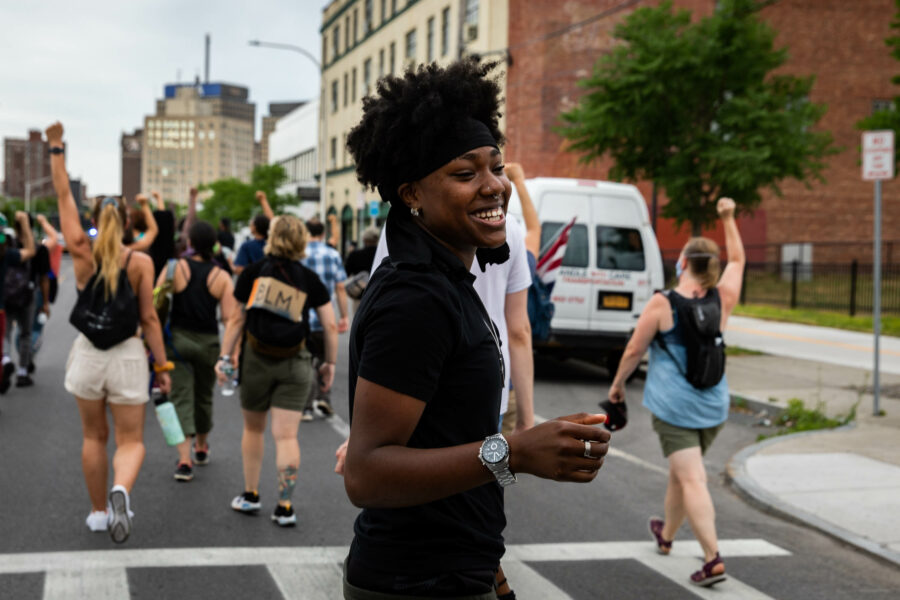
The eros effect also provides insight into the very nature of our political experiences by giving language and meaning to that intoxicating feeling of connection, love, euphoria, and potential that one experiences when engaged together in the fight for collective liberation. Indeed, for many of us, it is in these moments when we feel most free, empowered, and connected to others through intimate solidarity, or what can be considered an erotics of political action. Not only does this expand our sense of what is feasible and desirable, but our understanding of who we are in the world and how we relate to each other as well. No doubt, this is part of what keeps us coming back—both for the allure of that heady feeling and because it’s what transforms us into committed activists, bound to our comrades in struggle over the long haul, anticipating the next upsurge.
A longtime activist himself and deeply involved in organizing since the heyday of the 1960s, Katsiaficas’ work and writings have been an inspiration for generations of anarchists and radical activists who have come since. Along with his work on social movements, Katsiaficas’ eros effect has been particularly influential. In 2017, amidst the reverberating echoes of global rebellion in 2011 and the emergence of a new wave of protests during the early phases of the Movement for Black Lives, a collection of essays came out that revisits the significance and meaning of Katsiaficas’ work. Spontaneous Combustion: The Eros Effect and Global Revolution, edited by Jason Del Gandio and AK Thompson, reignited interest in his theories and sparked a critical dialogue between Katsiaficas and Thompson, in particular. What follows is context for this debate, including a biographical sketch of Katsiaficas’ life, work, and intellectual influences, and his most recent written rejoinder.

George Katsiaficas: A Biographical Sketch
George Katsiaficas first became politically active in 1969 and was imprisoned during the movement’s highpoint in May, 1970, becoming the sole person to graduate from MIT while in solitary confinement and beginning his lifelong commitment to activism and revolutionary struggle. It was his later mentorship under critical theorist Herbert Marcuse, however, that helped him to further develop his own theoretical perspectives and embark on a path to becoming one of today’s key political thinkers and movement scholars.
Herbert Marcuse fled Germany and went into exile with fellow members of the Institute for Social Research, popularly known as the Frankfurt School, with the rise of the Third Reich in the early 1930s. Marcuse first went to Geneva, eventually making it to the United States. Marcuse’s intellectual work, as well as that of his fellow theorists (such as Theodore Adorno and Max Horkheimer) was, in part, a response to the rise of Nazism and its implications for humanity. But just as important to Marcuse were questions surrounding how humans can create a liberated and free society, one in which class divisions and other hierarchies are abolished, and people are able to pursue their highest aspirations. Much of Marcuse’s work, and that of the Frankfurt School in general, revolved around this tension between the horrors of contemporary life and the struggle to create something better.
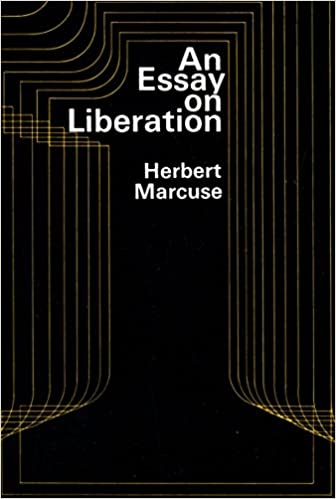
Marcuse developed a Marxist approach to analyzing historical trends and contemporary events that also relied on Hegelian dialectics and Freudian theory. His One-Dimensional Man: Studies in the Ideology of Advanced Industrial Society, published in 1964, influenced the New Left, presenting a critique of both capitalist societies and Soviet Communism. Marcuse reached the height of his popularity and impact on the student movements in the late 1960s and 1970s, speaking publicly, talking informally with students and other radicals, and publishing books such as An Essay on Liberation and Counterrevolution and Revolt (1969). As Javier Sethness Castro points out in Eros and Revolution: The Critical Philosophy of Herbert Marcuse, “all who read Marcuse must understand the depth of his ‘apocalyptic message’ – an ‘urgent warning’ to present and future generations regarding the threats of fascism, cataclysmic war, and environmental destruction” (1). Along with other notable figures like Angela Davis, Katsiaficas was one of the young organizers with whom Marcuse conspired and who took his urgent message to heart.
In addition to Marcuse’s influence, Katsiaficas’ work and political direction was also shaped by his ties to on-the-ground struggles and the uprisings that he participated in. In the late 1960s and early 1970s, Katsiaficas was close to the Black Panthers, immersed in the youth counterculture, and helped to organize many anti-Vietnam War protests. The FBI referred to him in their files a “New Left/anarchist,” and he was classified “Priority 1 ADEX,” indicating that he was to be immediately arrested in the event of a national emergency. He organized on the east coast, primarily in Boston, and after continual arrest and harassment, moved to San Diego, where his first commune was shot up by the FBI-organized Secret Army Organization (SAO). Believing in the possibility to organize a revolutionary base area in Ocean Beach, California, he then cofounded the Red House, a new commune built upon agitating and building counter-institutions. He and his comrades at the Red House were also influenced by Grace Lee and James Boggs, who studied with CLR James and organized in Detroit, helping develop what became known as autonomist Marxism.
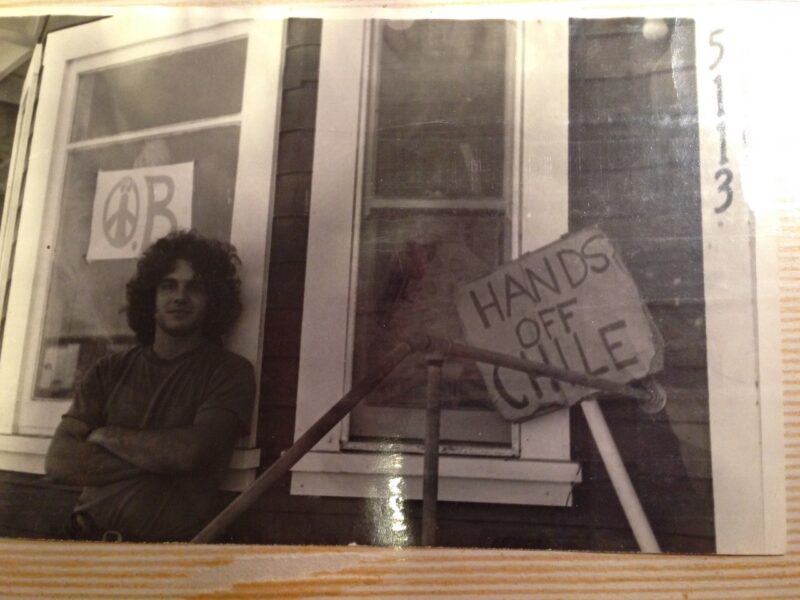
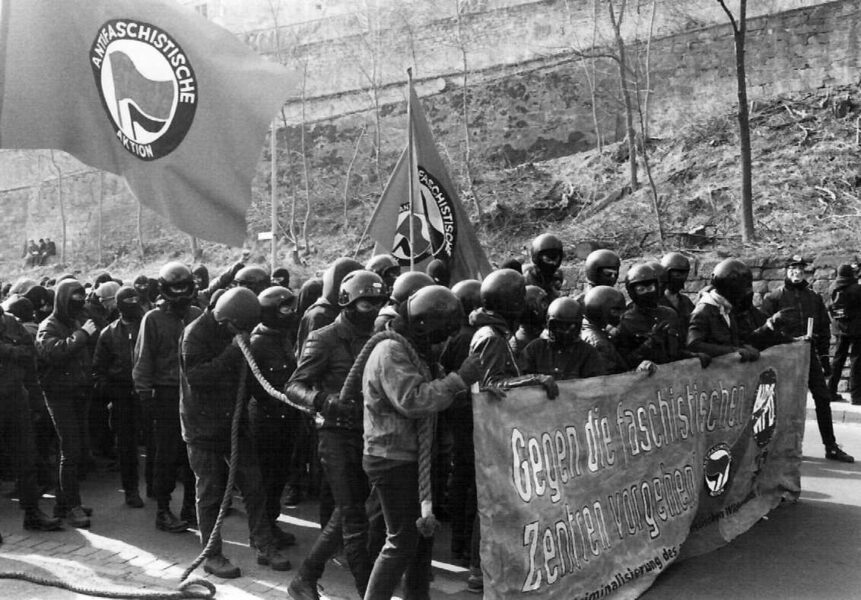
As the revolutionary movements receded, Katsiaficas made his way back to Boston from San Diego and began teaching at Wentworth Institute of Technology, a working-class college. In the 1980s, he spent time with the Autonomen (those who are autonomous) in Germany, writing about his experiences with them in places like Z Magazine. Katsiaficas’ writing about the German autonomous movement, with its emphasis on revolutionary politics, squatted housing and cultural spaces, and street militancy including black bloc tactics, was hugely influential for many anarchists and other US-based radicals at that time. The protest tactic of the black bloc, for which demonstrators all dress in black, cover their faces, and move as a coordinated group to neutralize police surveillance and attacks, was first used in the US in the early 1990s at the Earth Day Wall Street Action (2) and the DC march against the first US Gulf War. Katsiaficas’ work with the Autonomen was subsequently included in his The Subversion of Politics: European Autonomous Social Movements and the Decolonization of Everyday Life (1997), where he traces the lineage from 1968 through Italian feminism, the antinuclear movements, and antifascism, to their confrontational politics. He also draws out the (anti)politics and the theory of autonomy from his movement investigations.
Katsiaficas’ research and writings have consistently challenged Eurocentric and traditional approaches to social theory. When writing about movements, his vision is not restricted only to the West. His earlier book on the 1960s, The Imagination of the New Left: A Global Analysis of 1968 (1987), was unique in how it represented the movements as global, not confined to examining only those events in the US and Europe. He also spent five years in Korea, studying Asian social movements and uprisings, writing about them in the two volume Asia’s Unknown Uprisings (2012), which covered people’s movements from Korea, China, Thailand, and Tibet, among others. Katsiaficas is distinct from many academics in that he has also been a dedicated organizer. He goes beyond participant-observer to militant researcher, someone who lives amongst and collaborates with the people he writes about and sees his research as advancing global activism not simply describing or analyzing it. This doesn’t bias him against abstraction and analysis, however, but rather grounds his theoretical work in the practice of struggling to change the world. It is this history of social and political revolt and his personal commitment to radical politics that he brings into his work.
From Marcuse’s “Political Eros” to Katsiaficas’ “Eros Effect”
All this informs Katsiaficas’ concept of the eros effect, one of his most important contributions to movement theory and praxis. An extension of Marcuse’s ideas on “political eros,” the eros effect helps to explain why seemingly spontaneous movements emerge when they do. As Marcuse saw it, in advanced industrial societies, our instinct for eros, or pleasure in life, is sublimated (channeled into socially acceptable activities) due to repressive mechanisms of social control and domination. Even so, “resistance simmers beneath the surface of whittled down consciousness [that] may eventually boil over into a revolutionary action,” as eros can never be fully repressed (3).

Political eros, then, is key to cultural transformation and the creation of a free libertarian socialist society by compelling individuals to participate in the “Great Refusal.” This entails the rejection of “one-dimensional thinking” and embracing the erotic side of human nature that allows people to experience “friendship … the pursuit of knowledge … the creation of a pleasurable environment … the beautiful and the good … over destructive and competitive instincts,” thereby liberating themselves (4). Marcuse explains this process and the central role of youth activism for it in his 1966 “political preface” to Eros and Civilization:
The intellectual refusal may find support in another catalyst, the instinctual refusal among the youth in protest. It is their lives which are at stake, and if not their lives, their mental health and their capacity to function as unmutilated humans. Their protest will continue because it is a biological necessity. ‘By nature,’ the young are in the forefront of those who live and fight for Eros against Death… But in the administered society, the biological necessity does not immediately issue in action; organization demands counter-organization. Today the fight for life, the fight for Eros, is the political fight (5).
Following a decade of research on the movements and the revolutionary year of 1968, and with encouragement from Marcuse, Katsiaficas built off these ideas on political eros to form his theory called the eros effect. Infused with his own observations about the simultaneous occurrence of uprisings and rebellions, as well as Jungian understandings of a collective unconscious, rather than focusing on individual experiences of eros, he instead extends the concept to the collective whole of humanity.
As Katsiaficas argues, the eros effect “is a key feature of the historical process and the struggle for freedom” (6). This is due to our innate—and, importantly, rational—human impulse towards freedom, justice, and self-determination. Given this nature, every so often, there is a global collective awakening—or process of de-sublimation—in response to daily repression that leads to these cataclysmic moments of revolutionary uprising. This accounts for why spontaneous movements seem to arise simultaneously, as happened in 1968, during the Arab Spring, and most recently with the Black Lives Matter movement. In short, per his summary:
Such spontaneous leaps may be, in part, a product of long-term social processes in which organized groups and conscious individuals prepare the groundwork, but when political struggle comes to involve millions of people, it is possible to glimpse a rare historical occurrence: the emergence of the eros effect, the massive awakening of the instinctual human need for justice and freedom. When the eros effect occurs, it becomes clear that the fabric of the status quo has been torn, and the forms of social control have been ruptured (7).
When this happens, what we see is nothing short of a cultural shift, a new shared collective understanding. Through the eros effect, hundreds of thousands—if not millions—of people across national, ethnic, and racial boundaries take to the streets and “human love for, and solidarity with each other, suddenly replace the previously dominant values and norms, [and] competition gives way to cooperation, hierarchy to equality, power to truth”(8).

Spontaneous Combustion: An Ongoing Dialogue about the Eros Effect
Informed by the revolutionary mobilizations of 2011 and numerous uprisings in subsequent years, Del Gandio and Thompson’s edited collection, Spontaneous Combustion, expands on and interrogates Katsiaficas’ ideas (and by extension, Marcuse’s as well), while tackling broader questions on social and political rebellion. Containing essays by a dozen writers, the volume touches on subjects ranging from case studies in Japan, Korea, and Oakland to themes of feminism, the “embodied mind,” and reason as revolt. The collection also includes an interview with Katsiaficas done by Thompson, two essays by Katsiaficas, and an afterword by Douglas Kellner. Some essays build on the eros effectframework, while others, such as AK Thompson’s, challenge its fundamental premises.
This discussion raises essential questions relevant to those of us striving to create a different world—How do uprisings and revolutions happen? What is the relationship between organization and spontaneity? What role do emotions, desires, and unfulfilled needs play versus rational debate and political programs in social and political change? What ultimately leads people mobilizing in the streets to risk their lives?
The differences between Katsiaficas’ approach and that of AK Thompson, in particular, are quite sharp. Katsiaficas primarily argues that people are more motivated by love—for humanity, for freedom, for pleasure—whileThompson advocates that the driving force for revolutionary change is actually rage at injustice and collective experiences of “lack” under the “intolerable nature of the present” (9).
In his chapter, “Eros Effect or Biological Hatred?,” Thompson explains that, while he agrees Katsiaficas’ theory accounts for how “revolutionary activity becomes contagious,” he is not convinced that it “properly describes the compulsion that leads people toward revolutionary action in the first place” (10). In seeking to answer what he calls “the motivation question” or the reason behind “why we fight,” Thompson suggests that we look to Freud, Marx, Lacan, and other theorists who underscore our desire to transform society so as to attain what we imagine and hope for, but which is not currently a reality. In other words, what drives us to revolt is “the experience of lack emanating from the present’s inadequacies,” something that he feels we can intentionally amplify and channel toward revolutionary ends (11). Moreover, rather than a fundamental “goodness” in human nature, this reflects a universal biological hatred for the experience of lack.
It is this divergence in perspectives that has led to a subsequent ongoing dialogue between Katsiaficas and Thompson. In particular, as they both agree, their differing positions have strategic implications—in essence, can the eros effect be tactically harnessed to spark mobilizations, and, if so, how? To begin with, they consider whether or not the eros effect is something that causes revolutions or emerges from them, and whether it can be encouraged or only arises spontaneously and unexpectedly. Furthermore, if we are, in fact, able to nurture the revolutionary spirit of rebellion, should we focus on fostering human connections and solidarity, or is it better to agitate over grievances? Indeed, perhaps neither is correct (or rather, they both are, to some extent). Could it be that the eros effect is both cultivated through struggle on the streets and what leads us out there to begin with? Maybe it is bothlove and rage that drives us to action—some combination of love and deep solidarity for each other and rage over the cruelty, indifference, and violence of our current system. After all, as Thompson points out, along with political eros, Marcuse himself actually cites “biological hatred” as fundamental to the “Great Refusal” (12).
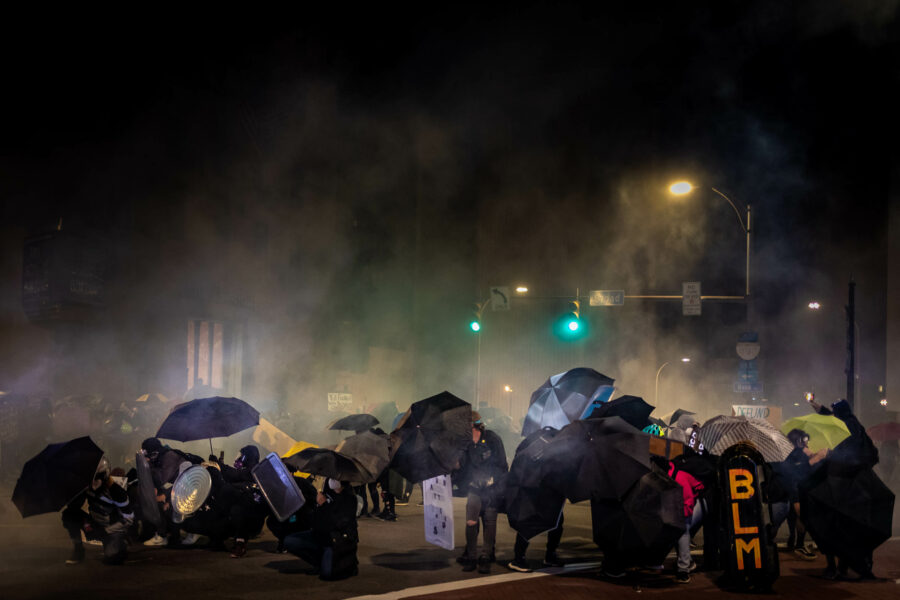
We can think, for example, about many movements today. It is both love and rage that drives efforts for racial justice—a love for and valuation of Black peoples’ lives and deep rage over our society built on racism, hatred, and death. In organizing around climate issues, it is both a love of the Earth and humanity and a recognition of our interdependence with non-human nature and anger over the destructive nature of racial capitalism. During the pandemic, it is love and care for others that catalyzed tens of thousands of mutual aid projects and it was also fear and fury over state failures to prevent millions from dying. And, although outrage over fascism may drive antifascist resistance, this work is also driven by militant love for each other as expressed through community self-defense and solidarity.
Regardless, it is clear that Katsiaficas’—and Marcuse’s—work is particularly useful in this time of despair. We confront institutional racism, police violence, relentless patriarchy, and anti-trans violence while fascist forces continue to grow in the streets. All this comes against a background of increasing climate instability, species extinction, and ongoing ecological crisis. Reintroducing the power of political eros and understanding how the eros effect animates the best of people’s historic movements towards freedom and happiness can help us better understand how social change happens and give us a basis for hope. Going back to Marcuse, one can see how his ideas on political eros and the politics of refusal resonate with radical thinkers today, such as adrienne maree brown and Walidah Imarisha, who summon radicals to develop a liberatory imagination, calling for a politics of pleasure and abundance in defiance of authoritarianism and tendencies in society taking us towards fascism (13).
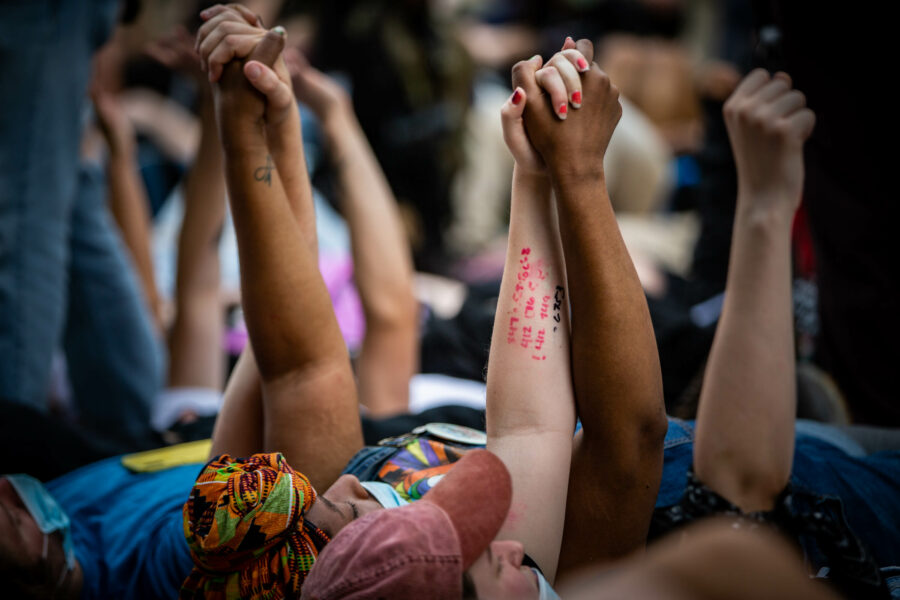
Meanwhile, the eros effect is especially helpful for making sense of the current political moment. One never knows where the next upsurge will occur. A couple of years after the financial crisis in 2008, we suddenly experienced the Arab Spring, followed by the Occupy movement. In 2016, following the murders of Trayvon Martin and Mike Brown, the Black Lives Matter movement was born, only to recede, and then return with historic force after the police murder of George Floyd. The Movement for Black Lives of 2020 may be the largest social movement in US history (14). In fact, looking at the many recent and ongoing uprisings—from protests against anti-abortion laws in Poland and Honduras to pro-democracy movements in Myanmar, and before that, Hong Kong, France, Brazil, and Lebanon to name only a few—we may well be currently living in a new period of global revolt motivated, in part, by the eros effect.
There are any number of other reasons to revisit Katsiaficas’ work on eros. It has very practical implications for movement building by underscoring the importance of strengthening trust and solidarity across divides that can “act as a guiding force and as a life-affirming principle as people unite in political activism … in moments of crisis” (15). Of course, it also helps to explain the overarching question that so many of us have asked: “Why and how do human beings respond to oppression and fight for liberation”? (16) It provides insight into the erotic experience of shared struggle in the street that bonds us to our comrades and changes who we are. As Katsiaficas reminds us, while revolutionary moments of the eros effect may be fleeting, they “can change human beings in profound and long-lasting ways” (17). And there are still more theoretical and praxis-driven reasons to critically reflect on the eros effect that the debate and discussions with Thompson and others in Spontaneous Combustion draw into relief. Yet, perhaps above all, it is an auspicious time to revisit the work of Katsiaficas, and Marcuse before him, as they offer us hope and a sense of possibility, which are essential in sustaining our long struggle towards a free society.
George Katsiaficas’ response to Spontaneous Combustion is here!
Hillary Lazar is a radical educator, writer, and organizer. She is part of the Perspectives on Anarchist Theory editorial collective and on the advisory board for Anarchist Agency. Her work has been published in Perspectives, Anarchism: A Conceptual Approach, Socialism and Democracy, and Research in Political Sociology. Hillary is a doctoral candidate in Sociology at the University of Pittsburgh.
Paul Messersmith-Glavin grew up in Chicago and is a longtime organizer. He is a member of the Institute for Anarchist Studies (IAS) and its journal collective, Perspectives on Anarchist Theory. His current organizing work revolves around providing free Chinese herbal formulas to aid the recovery of injured Black Lives Matter, antifascist, and anarchist protesters as well as providing free community acupuncture for the houseless and activist community. Follow him on Twitter @PaulMessersmit4
Cover photo by Maranie R. Staab.
(See more of Maranie’s work and get in touch with her at her website here.)

Notes
- Javier Sethness Castro, Eros and Revolution: The Critical Philosophy of Herbert Marcuse (Boston: Brill, 2016), 13-14, emphasis in original.
- George Katsiaficas and Paul Messersmith-Glavin, “From Why Wall Street? The Case for Green Direct Action (1990)” in Remaking Radicalism: A Grassroots Documentary Reader of the United States, 1973 – 2001, ed. Dan Berger and Emily K. Hobson (Athens: The University of Georgia Press, 2020), 388.
- Arnold L. Farr, “Eros in a One-Dimensional Society” in Spontaneous Combustion: The Eros Effect and Global Revolution, ed. Jason Del Gandio and AK Thompson (Albany: SUNY Press, 2017), 78.
- George Katsiaficas, “From Hebert Marcuse’s ‘Political Eros’ to the Eros Effect” in Spontaneous Combustion: The Eros Effect and Global Revolution, Jason Del Gandio and AK Thompson (Albany: SUNY Press, 2017), 55-56.
- Herbert Marcuse, Eros and Civilization: A Philosophical Inquiry into Freud (Boston: Beacon Press, 1966), xxv, emphasis in original.
- George Katsiaficas, “Remembering May ’68: An interview with George Katsiaficas” by AK Thompson, in Spontaneous Combustion: The Eros Effect and Global Revolution, ed. Jason Del Gandio and AK Thompson (Albany: SUNY Press, 2017), 26.
- George Katsiaficas, The Global Imagination of 1968: Revolution and Counterrevolution (Oakland: PM Press), 15.
- George Katsiaficas, “Eros and Revolution” in Spontaneous Combustion: The Eros Effect and Global Revolution, ed. Jason Del Gandio and AK Thompson (Albany: SUNY Press), 38.
- AK Thompson, “Eros Effect or Biological Hatred?” in Spontaneous Combustion: The Eros Effect and Global Revolution, ed. Jason Del Gandio and AK Thompson (Albany: SUNY Press, 2017), 284.
- Thompson, “Eros Effect or Biological Hatred?,”
- Thompson, “Eros Effect or Biological Hatred?,”
- Thompson, “Eros Effect or Biological Hatred?,”
- See Walidah Imarisha and adrienne maree brown, Ocatvia’s Brood: Science Fiction Stories from Social Justice Movements (Oakland: Institute for Anarchist Studies / AK Press, 2015) and adrienne maree brown’s Emergent Strategy: Shaping Change, Changing Worlds (Oakland: AK Press, 2017), Pleasure Activism: The Politics of Feeling Good (Oakland: AK Press, 2019), and We Will Not Cancel Us: And Other Dreams of Transformative Justice(Oakland: AK Press, 2020.)
- Larry Buchanan, Quoctrung Bui, and Jugal K. Patel, “Black Lives Matter May Be the Largest Movement in U.S. History,” in the New York Times, By July 3, 2020.
- Katsiaficas, “From Hebert Marcuse’s ‘Political Eros’ to the Eros Effect,” 54.
- Katsiaficas, “Remembering May ’68: An interview with George Katsiaficas,” by Thompson, 28.
- Douglas Kellner, “Afterword,” in Spontaneous Combustion, 290.

